- Home
- Isaac Asimov
In the Beginning Page 6
In the Beginning Read online
Page 6
An added factor to the moon’s noticeability is that unlike like the sun it is not always and invariably a circle of light, but goes through a series of “phases” instead. From night to night it changes, beginning as a thin crescent just after sunset, gradually waxing as it moves farther from the sun in the sky, until it is a full moon, a perfect circle of light high in the sky at midnight, then waning again until it is a thin crescent just before the dawn. It then moves past the sun from west to east and begins the cycle over again. (In general, the more the moon waxes and the brighter it gets, the greater the fraction of the night it can be seen shining in the sky, till at full moon it is in the sky all night long.)
For all these reasons, it is fair to associate the moon with the night rather than with the day, even if it does spend as much time in the day sky as in the night sky.
The phases of the moon were fundamental to early calendars, which began a new month at each new moon (the first appearance of the crescent just after sunset). The Babylonians did this, and the Jews and Greeks copied them.
37. The stars are dismissed quickly, almost as an after-thought. It was necessary to mention them, to make them clearly a creation of God and not divine in their own right, but since they played no direct part in either giving light or in setting up a calendar, they required no more than a few words. The starlike planets—Mercury, Venus, Mars, Jupiter, and Saturn—are not given any special mention.
The P-document makes it clear that Earth is older than any of the heavenly bodies. Earth was rescued from Chaos, and the dry land (with its plant cover) was created on the third day. The heavenly bodies were then created, at a stroke, on the fourth day.
The scientific view is quite different. The formation of the solar system out of the original cloud was of such a nature that all its bodies were formed at essentially the same time. The sun, the moon, Earth, and all the planets, satellites, asteroids, and comets are essentially the same age; each one is about 4.6 billion years old. Earth is not older than the sun or the moon.
As for the stars, they are of varying age, some being older, even considerably older, than the sun and Earth. Some stars must be just about as old as the Universe, having been formed comparatively soon after the big bang and are, perhaps, three times the age of the sun and Earth.
17 And God set them in the firmament of the heaven to give light upon the earth,
18 And to rule over the day and over the night, and to divide the light from the darkness: and God saw that it was good.
19 And the evening and the morning were the fourth day.
20 And God said, Let the waters bring forth abundantly the moving creature 38 that hath life, 39 and fowl that may fly above the earth 40 in the open firmament of heaven.
38. Now that all the nonliving paraphernalia of heaven and earth have been formed, it is time to produce that which represents the climax of Creation-life.
In the case of life, too, matter proceeds by stages to the peak of climax. Since that will be humanity, which lives on land, God first forms those portions of life that do not inhabit land, but that are characteristic of the sea and air.
First the sea is mentioned. The creation is that of “the moving creature”; that is, animal life, as contrasted with the rooted plants, which do not change their place and which were formed on the third day.
39. The moving creatures of the sea are specifically mentioned as being alive (“that hath life”), something that was not done in connection with the land vegetation created on the third day. Here is clear evidence that, in the view of the P-document, the plant world is not truly alive, that land plants existed before animals of any kind, and that the creation of life began only on the fifth day.
According to the scientific view, animal life did exist in the sea before it existed on land, as the Bible indicates, but in opposition to the order in the P-document, plants (which are also alive) also existed in the sea before they existed on land.
In fact, for some three billion years, the sea contained life while the land was sterile. The most primitive forms of life were tiny cells the size of bacteria that were neither truly plant nor animal by today’s criteria. Some of these cells (the “blue-green algae”) possessed chlorophyll and could carry through photosynthesis-they were plantlike in that respect.
Even today, the ocean is full of microscopic life on which the larger and more complicated forms feed. Much of this floating microscopic life (“plankton”) consists of green-plant cells that photosynthesize precisely as the green plants of the land do.
The sea is as filled with vegetation as the land is, and this sea vegetation provides some four-fifths of all the photosynthesis on Earth.
However, whereas the land vegetation is large enough to be seen with the unaided eye and is, indeed, in the case of most trees, larger and taller than any animals, the sea vegetation (except for seaweed) is invisible. Consequently, the P-document, which describes the creation of land vegetation, ignores sea vegetation altogether.
The early microscopic life also included animal cells, which could not perform photosynthesis and which lived on plant cells. It wasn’t till about six hundred million years ago that good-sized multicellular animals evolved, animals possessing sufficiently complex structures to leave noticeable fossil remains behind.
Complex animal life in the sea existed for nearly two hundred million years before land vegetation appeared, a reverse of the order presented in the P-document.
It was not till about 425 million years ago that plants evolved structures and functions that made it possible to live on dry land, with animals following soon after.
40. The word “fowl” can be used for the common rooster and hen, specifically; for any large edible bird, more generally; and for any bird at all, still more generally. “Fowl” is related to the German Vogel, which means “bird.” The Hebrew word oph translated in the King James Version as “fowl” is more accurately translated (in modern terms) as “bird” in the Revised Standard Version.
In fact, oph has a more general meaning still, for birds are by no means the only animals capable of flight. There are the bats, which are mammals but which have the full power of flight. On the basis of their flying, the Biblical writers include them with the birds. Thus, when the Bible lists those birds that may not be eaten, one verse reads, “And the stork, the heron after her kind, and the lapwing, and the bat” (Leviticus 11:19).
It amuses some moderns that the Biblical writers classify bats with birds or, for that matter, whales with fish. To us, bats and whales are mammals, even though the former can fly and the latter never leave the sea.
All classifications, however, are man-made. We group certain animals as mammals for various physiological reasons—such as bearing live young, possessing milk glands and a diaphragm, having hair, and so on. This makes particular sense in the light of the evolutionary development of life.
It may, however, be convenient to make other classifications. Whales may be more like rabbits, physiologically, than they are like fish. Still, if you want to catch whales, you have to go where the fish are and not where the rabbits are. In a practical sense, then, it could be useful to classify on the basis of habitat, placing whales with fish and bats with birds.
You might even classify insects with birds, as the Bible actually does, since insects also fly. In listing the living creatures that might not be eaten, the Bible says, “All fowls that creep, going upon all four, shall be an abomination unto you” (Leviticus 11:20). Since the very next two verses make an exception in the case of locusts, which leap rather than creep, it seems clear that by “all fowls that creep” is meant insects. The Revised Standard Version, in this verse, speaks of “winged insects” rather than “fowl.”
The Hebrew oph, then, refers to three very different kinds of flying creatures: insects, birds, and bats. (There would also have been a fourth kind—the flying reptiles called pterosaurs—had they not been so long extinct that the Biblical writers knew nothing of them.)
In the P-document, all flying creatures were created at once at a single command, but in the scientific view, they came into being separately and at very long intervals.
The oldest of the flying creatures are the insects. Primitive insects are among the first animals to colonize the land surfaces of Earth about four hundred million years ago. Those first insects were probably flightless, however, and it may not have been till three hundred million years ago that the first flying insects evolved.
For over a hundred million years, the air belonged to insects alone. Then, about one hundred seventy million years ago, the first pterosaurs and birds evolved.
About seventy million years ago, the pterosaurs became extinct, but both insects and birds survived and continued to flourish.
Bats were the last of the flyers, having evolved only about fifty million years ago.
21 And God created great wholes, 41 and every living creature that moveth, which the waters brought forth abundantly, after their kind,42 and every winged fowl after his kind: and God saw that it was good.
41. The word given as “whale” in the King James Version is tannin in the Hebrew, and what it actually means is “a great fish of the sea.” Tannin is translated as “sea monster” in the Revised Standard Version.
Elsewhere in the Bible, tannin is used for living things that are clearly not whales. Thus, God tells Moses, “… Take thy rod, and cast it before Pharaoh, and it shall become a serpent” (Exodus 7:9). It is also used when God is addressed thus: “…thou brakest the heads of the dragons in the waters” (Psalm 74:13).
The tannin referred to in this portion of the Creation-myth may hark back to the sea monster of Chaos in the Babylonian Creation-myth. The specific mention of “great whales” may, then, really be a way of indicating that the sea monsters spoken of by the Babylonians are by no means anti-gods that can fight with God even on the off-chance of winning. Even the largest monstrous example of life is, like everything else, but a creation of God and is utterly subject lo him.
Of course, a sea monster is exactly what whales are. The blue whale of Antarctic waters can be as much as one hundred feet long and weigh as much as one hundred fifty tons. It is not only the largest living animal, but is probably the largest animal that has ever lived on Earth.
Not quite as large is the sperm whale, which can attain lengths of seventy feet. It is the most formidable of the whales, however, and is ferocious and carnivorous, whereas the blue whale feeds only on tiny creatures. Other examples of large and monstrous sea creatures are various giant sharks, giant squids, giant jellyfish, giant crocodiles, giant clams, and so on. As examples of extinct giants of the past, there were the plesiosaurs, huge sea reptiles with lengths (mostly neck) of nearly fifty feet.
The Bible also contains reference to “leviathan,” which in various places may refer to real animals such as crocodiles and serpents, but can also refer to the sea monster of Chaos as “Thou brakest the heads of leviathan in pieces …” (Psalm 74:14).
In later legends invented by rabbinical romancers, leviathan became an impossibly huge monster, based on the rather poetic description in the; forty-first chapter of the Book of job. where, in prosaic fact, the reference is probably to the crocodile.
In the. verse, it would seem that all creatures of the sea were created simultaneously. According to the scientific view, on the other hand, this is far from being the case.
The first microscopic forms of sea life came into being about three and one-half billion years ago. Sizable invertebrate forms swarmed in the sea about six hundred million years ago, while the earliest known fish appeared about five hundred million years ago.
About two hundred million years ago, the plesiosaurs evolved; they became extinct about seventy million years ago.
The cetaceans (that is, the whales, dolphins, and porpoises) are mammals and undoubtedly had land-living ancestors, though we don’t have the evidence for their evolution and can’t identify their ancestors. They first appeared in the sea about seventy million years ago.
42. The animals, like the plants, are described as having been created in separate species (“after their kind”). Once again, this is not the scientific view, which regards all species of animals as having evolved from previous somewhat different species, back to the first primordial bit of life—formed by random processes.
22 And God blessed 43 them, saying, Be fruitful and multiply, 44 and fill the waters in the seas, and let fowl multiply in the earth.45
43. To “bless” is to confer felicity, prosperity, good fortune. Properly, only God can bless, since only he can control fate. Human beings can. however, call down blessings in God’s name, and, presumably, God can heed them or not as he pleases.
44. The first occasion on which God confers a blessing is in his command that the animals of the sea and air “Be fruitful and multiply.”
This makes sense, since living things cannot multiply their numbers unless they have ample food and a secure environment; and ample food and a secure environment are certainly felicity, as anyone who has gone without one or the other would testify.
According to the P-document, however, the blessing is given at the very beginning of life, and it is possible that God created only limited numbers of each species or even that he created only one pair of each species. To be sure, the preceding verse says that “the waters brought forth abundantly.” but that may mean that many different species of sea life were created and not necessarily that many individuals of each species were created. We might argue, then, that there was a largely empty world into which to expand and that the command to be fruitful and multiply made much sense.
What is a blessing under one condition, however, may not be a blessing under others. After a dry spell, there can be no blessing like a steady, soaking rain. But when the rivers are flooding, a day of steady, soaking rain is not a blessing but a curse.
In the same way, it has been frequently found among animals that overmultiplication during brief periods of unusually favorable conditions can lead to an overconsumption of food, which will in turn lead, when conditions become less favorable, to famine, to disease, and to a plunge in numbers well below the level that had been supported before the brief period of unusually favorable conditions. This is an example of the command “Be fruitful and multiply” turning into a curse.
Demographers—those who study population dynamics—have long known that the command “Be fruitful and multiply” has become an increasingly dubious blessing as far as human beings are concerned.
In 1798, the English economist Thomas Robert Malthus first pointed out the dire consequences of overpopulation. He held that the capacity for human multiplication was such that human numbers were bound to outstrip the human food supply and that war, famine, and disease were all nature’s ways of canceling out the overgreat tendency for humanity to multiply. The only way out of a dreary and never-ending round of catastrophe, then, he said, was to produce fewer children by sexual abstinence. (A forlorn hope, if that is the only way out.)
Malthu’s gloom seemed to be misplaced, for even as he wrote, the world was beginning the Industrial Revolution, which enabled humanity to make use of inanimate sources of energy (coal, oil, natural gas, moving water and wind, and so on) to increase greatly the food-yield of the world. In addition, science greatly increased the security of life against such things as disease, improper diet, and other threats.
This was merely a postponement, however, and not at all an abolition of the danger. The population of Earth is now more than four times what it was in Malthus’s time, and on the average, people live better. The expenditure of energy that has made all this possible, it should be remembered, is at a rate hundreds of times as great as in Malthus’s time. We are beginning to have trouble maintaining the supply of energy required to keep the world moving smoothly, and the total population is now putting an unbearable strain on the world’s ecological balance.
Under these circumstances, every further increase in population is an
enormous danger, and the primal command, “Be fruitful and multiply,” has become, under changed circumstances, not a blessing but a deadly curse.
45. The command to multiply is given only to animals. There had been no such blessing given to the world of plants when it was created on the third day. That would appear to be because each plant seems to produce seed of itself.
Animals, on the other hand, clearly had to pair off and engage in sexual activity to produce young. The blessing was needed in the case of animals, therefore, to give them the necessary inspiration and vigor for coupling.
Yet plants, too, have both male and female sex cells. If the plants themselves cannot move, the grains of pollen, which carry the male sex cells, can be carried to the pistil at the center of a flower by the wind or by the unwitting action of insects or birds. (The pistil contains the female sex cells.)
Many plants have both pistils and pollen-producing anthers in each blossom. Pollen from the anthers can fertilize the pistil in the same blossom (self-fertilization) in some plants. In other plants, however, fertilization will work only if pollen from one plant reaches the pistil of another plant of the same species (cross-fertilization).
In some species of plants, in fact, some individual plants produce only the male sex cells and others only the female sex cells; in those cases, then, we have male and female plants. This was first pointed out by the Italian botanist Prospero Alpini about 1600, and it created quite a furor among those who were sure, on the basis of their interpretation of the Bible, that plants were fundamentally different from animals in such things.
23 And the evening and the morning were the fifth day.
24 And God said. Let the earth bring forth the living creature after his kind, 46 cattle, 47and creeping thing, 48 and beast of the earth 49 after his kind: and it was so.

 The Return of the Black Widowers
The Return of the Black Widowers The Stars, Like Dust
The Stars, Like Dust Foundation
Foundation David Starr Space Ranger
David Starr Space Ranger I, Robot
I, Robot Puzzles of the Black Widowers
Puzzles of the Black Widowers Casebook of the Black Widowers
Casebook of the Black Widowers The Ugly Little Boy
The Ugly Little Boy Azazel
Azazel Pebble in the Sky
Pebble in the Sky Foundation and Empire
Foundation and Empire The Complete Robot
The Complete Robot Fantastic Voyage
Fantastic Voyage Foundation and Earth
Foundation and Earth The Naked Sun
The Naked Sun The Currents of Space
The Currents of Space Foundation's Edge
Foundation's Edge The Robots of Dawn
The Robots of Dawn Nightfall
Nightfall The Caves of Steel
The Caves of Steel Prelude to Foundation
Prelude to Foundation Nemesis
Nemesis Robot Dreams
Robot Dreams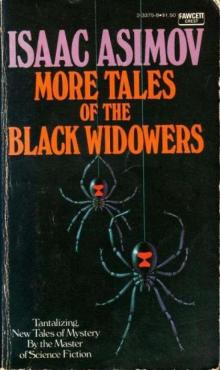 More Tales of the Black Widowers
More Tales of the Black Widowers The Complete Stories
The Complete Stories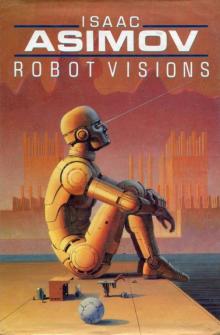 Robot Visions
Robot Visions Lucky Starr And The Moons of Jupiter
Lucky Starr And The Moons of Jupiter Lucky Starr and the Big Sun of Mercury
Lucky Starr and the Big Sun of Mercury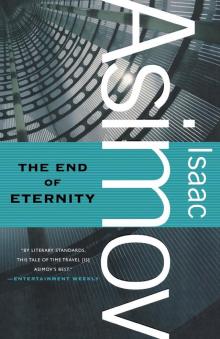 The End of Eternity
The End of Eternity The Bicentennial Man and Other Stories
The Bicentennial Man and Other Stories Lucky Starr And The Rings Of Saturn
Lucky Starr And The Rings Of Saturn Buy Jupiter and Other Stories
Buy Jupiter and Other Stories Forward the Foundation
Forward the Foundation Lucky Starr and the Oceans of Venus
Lucky Starr and the Oceans of Venus The Positronic Man
The Positronic Man The Portable Star
The Portable Star Asimovs Mysteries
Asimovs Mysteries Earth Is Room Enough
Earth Is Room Enough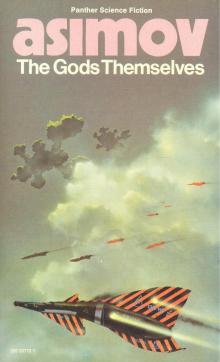 The Gods Themselves
The Gods Themselves Youth
Youth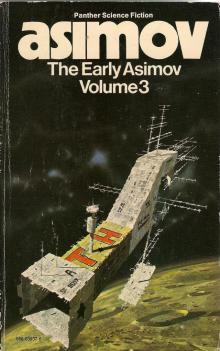 The Early Asimov Volume 3
The Early Asimov Volume 3 The Winds of Change and Other Stories
The Winds of Change and Other Stories Of Time, Space, and Other Things
Of Time, Space, and Other Things Nine Tomorrows
Nine Tomorrows Time Warps
Time Warps Robots and Empire
Robots and Empire Young Star Travelers
Young Star Travelers Fantastic Voyage II: Destination Brain
Fantastic Voyage II: Destination Brain Second Foundation
Second Foundation The Rest of the Robots
The Rest of the Robots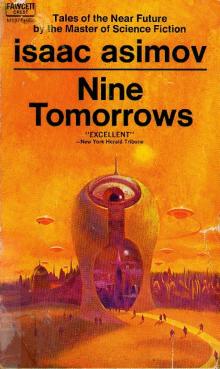 NINE TOMORROWS Tales of the Near Future
NINE TOMORROWS Tales of the Near Future Daneel Olivaw 1 - The Caves of Steel
Daneel Olivaw 1 - The Caves of Steel THE BICENTENNIAL MAN
THE BICENTENNIAL MAN David Starr Space Ranger (lucky starr)
David Starr Space Ranger (lucky starr)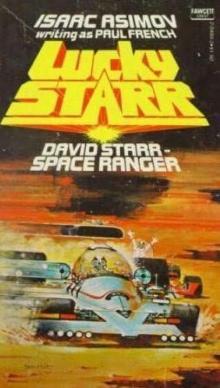 David Starr Space Ranger (ls)
David Starr Space Ranger (ls) Lucky Starr And The Big Sun Of Mercury ls-4
Lucky Starr And The Big Sun Of Mercury ls-4 Pebble In The Sky te-1
Pebble In The Sky te-1 Asimov’s Future History Volume 9
Asimov’s Future History Volume 9 Gold: The Final Science Fiction Collection
Gold: The Final Science Fiction Collection Foundation and Earth f-7
Foundation and Earth f-7 Asimov's New Guide to Science
Asimov's New Guide to Science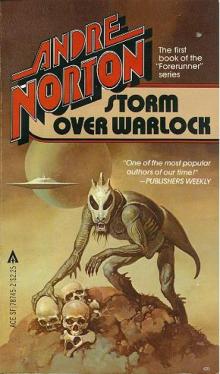 STORM OVER WARLOCK
STORM OVER WARLOCK Stars, Like Dust
Stars, Like Dust Norby The Mixed-Up Robot
Norby The Mixed-Up Robot Found!
Found! Asimov’s Future History Volume 11
Asimov’s Future History Volume 11 Second Foundation f-5
Second Foundation f-5 Asimov’s Future History Volume 15
Asimov’s Future History Volume 15 The Early Asimov. Volume 1
The Early Asimov. Volume 1 Secound Foundation
Secound Foundation Daneel Olivaw 3 - The Robots of Dawn
Daneel Olivaw 3 - The Robots of Dawn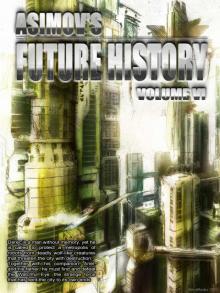 Asimov’s Future History Volume 6
Asimov’s Future History Volume 6 The Early Asimov. Volume 2
The Early Asimov. Volume 2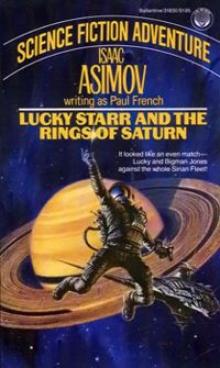 Lucky Starr And The Rings Of Saturn ls-6
Lucky Starr And The Rings Of Saturn ls-6 100 Malicious Little Mysteries
100 Malicious Little Mysteries Forward the Foundation f-2
Forward the Foundation f-2 I.Asimov: A Memoir
I.Asimov: A Memoir Foundation's Edge f-6
Foundation's Edge f-6 Lucky Starr and the Pirates of the Asteroids ls-2
Lucky Starr and the Pirates of the Asteroids ls-2 Robot City 1 & 2
Robot City 1 & 2 The Fourth Science Fiction Megapack
The Fourth Science Fiction Megapack Asimov’s Future History Volume 16
Asimov’s Future History Volume 16 The Dim Rumble
The Dim Rumble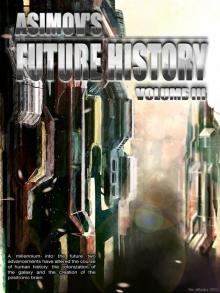 Asimov's Future History Volume 3
Asimov's Future History Volume 3 The Currents Of Space te-3
The Currents Of Space te-3 Asimov’s Guide To Shakespear. Volume 1
Asimov’s Guide To Shakespear. Volume 1 Asimov’s Future History Volume 13
Asimov’s Future History Volume 13 Asimov’s Future History Volume 12
Asimov’s Future History Volume 12 The Secret Sense
The Secret Sense Of Time and Space and Other Things
Of Time and Space and Other Things Norby tnc-2
Norby tnc-2 Norby The Mixed-Up Robot tnc-1
Norby The Mixed-Up Robot tnc-1 Misbegotten Missionary
Misbegotten Missionary Asimov’s Future History Volume 19
Asimov’s Future History Volume 19 Fantastic Voyage II: Destination Brain fv-2
Fantastic Voyage II: Destination Brain fv-2 Asimov’s Future History Volume 10
Asimov’s Future History Volume 10 Asimov's Future History Volume 2
Asimov's Future History Volume 2 Feeling of Power
Feeling of Power In the Beginning
In the Beginning The Caves of Steel trs-1
The Caves of Steel trs-1 Asimov's Future History Vol 2
Asimov's Future History Vol 2 Caliban c-1
Caliban c-1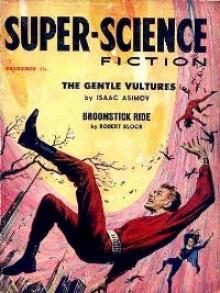 The Gentle Vultures
The Gentle Vultures Utopia c-3
Utopia c-3 Prelude to Foundation f-1
Prelude to Foundation f-1 Short Stories Vol.1
Short Stories Vol.1 Asimov’s Future History Volume 8
Asimov’s Future History Volume 8 Daneel Olivaw 4 - Robots and Empire
Daneel Olivaw 4 - Robots and Empire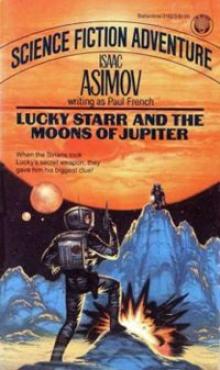 Lucky Starr The And The Moons of Jupiter ls-5
Lucky Starr The And The Moons of Jupiter ls-5 Gold
Gold Asimov’s Future History Volume 4
Asimov’s Future History Volume 4 Foundation and Empire f-4
Foundation and Empire f-4 Potential
Potential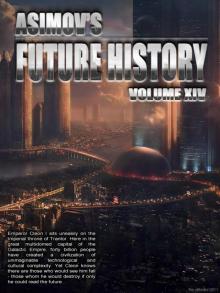 Asimov’s Future History Volume 14
Asimov’s Future History Volume 14 Asimov’s Future History Volume 7
Asimov’s Future History Volume 7 Daneel Olivaw 2 - The Naked Sun
Daneel Olivaw 2 - The Naked Sun Lucky Starr and the Pirates of the Asteroids
Lucky Starr and the Pirates of the Asteroids Foundation f-3
Foundation f-3 All the Troubles of the World
All the Troubles of the World Cleon the Emperor
Cleon the Emperor Asimov's Future History Volume 5
Asimov's Future History Volume 5 Asimov’s Future History Volume 20
Asimov’s Future History Volume 20 Robots and Empire trs-4
Robots and Empire trs-4 Profession
Profession It's Been a Good Life
It's Been a Good Life The Robots of Dawn trs-3
The Robots of Dawn trs-3 Lucky Starr And The Oceanf Of Venus ls-3
Lucky Starr And The Oceanf Of Venus ls-3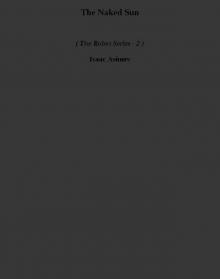 The Naked Sun trs-2
The Naked Sun trs-2 Asimov's Future History Volume 1
Asimov's Future History Volume 1